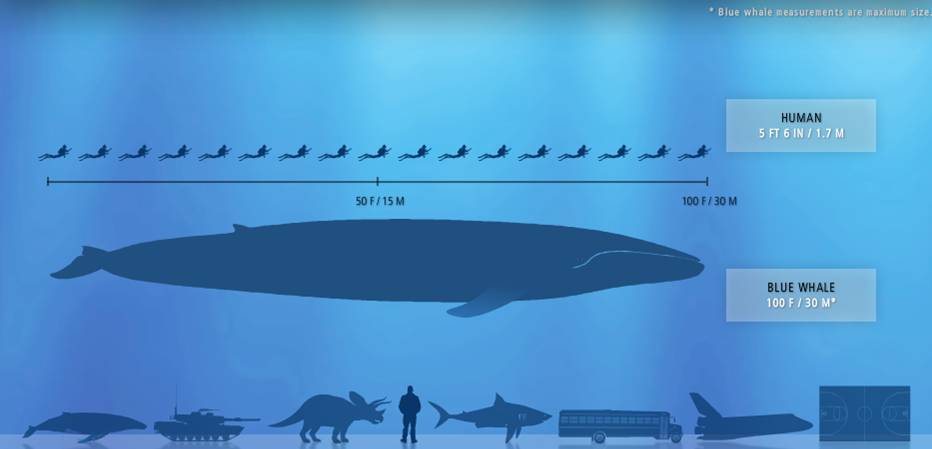
Blue whales aren’t just the largest creatures living today. They are the largest known animals ever to roam the face of the Earth (or rather, to ever swim the blue seas). These creatures reach a staggering 100 feet (30 meters) long, and they weigh upwards of 200 tons (181 metric tons). Still not impressed? Their tongues alone can weigh as much as an elephant.
Amazingly, they subsist almost exclusively off of tiny shrimp-like animals (called krill). Of course, when you are this big, if you eat tiny creatures, you need to consume a lot of tiny creatures in order to survive—about 4 tons (3.6 metric tons) of krill a day, to be exact.

Despite their large size, they are rather speedy. They generally move around 5 miles an hour (8 km/h); however, if they need to, they can go 20 miles an hour (32 km/h). On top of being enormous and relatively quick, they also have amazing hearing. Ultimately, blue whales can hear each other when they are 1,000 miles (1,600 kilometers) away.
Oh, and they are also among the longest-lived animals on the planet. Scientists found that, by counting the layers of a whale’s earplugs (much like tree rings in dendrochronology), they can estimate the animal’s age. The oldest blue whale found to date was 110 years old. However, the average lifespan is estimated around 80 to 90 years.
And of course, that’s not all. The animals spend most of their time at amazing depths. They dive more than 6,000 feet (1,800 meters) in pursuit of prey and can stay down for more than an hour (unsurprisingly, they have huge lungs).
So. How did we deal with these majestic creatures? Well, you can probably guess, but it bears telling anyway.
“Whaling was the oil industry of its day,” says Hal Whitehead, a biologist at Dalhousie University in Nova Scotia.
If you want to know more, check out this interesting and informative article by the World Wildlife Foundation.
1) Blue Whale Surfaces

2) Blue Whale Skull
